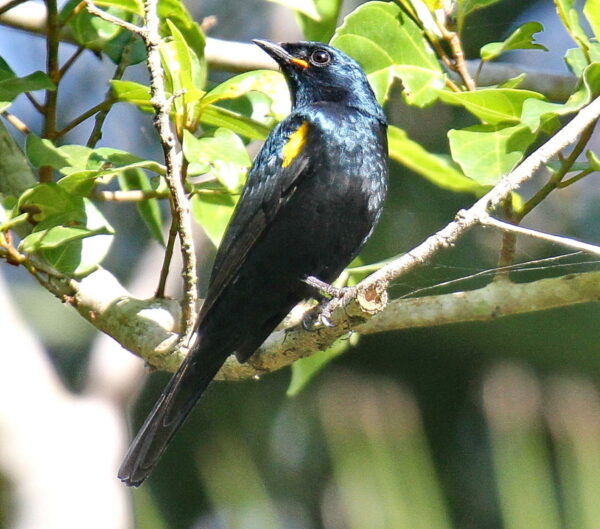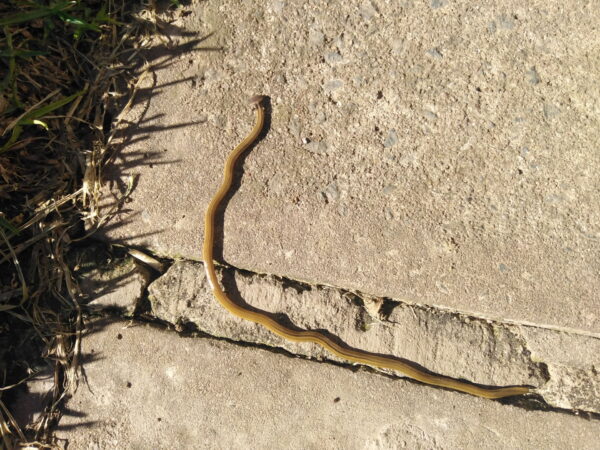The weather was kind, warm sun brought out swallows and swifts in great numbers for their early morning swirl above the lawn. One “twitcher” had come specifically to find the Half-collared Kingfisher. Bingo, three on one pond, and interacting for nearly an hour. A pair of Yellow-throated Woodland-Warblers was another bonus, supposedly common but always hard to find. “Our” Arrow-marked Babblers (the family is resident) are getting ever more confiding, and now spend much time in the garden close to the buildings. Cape White-eyes were in the move; it’s the time of year when young are fledged and independent, and all switch from insect food to gathering at berry flushes.
Best bird was a Black Cuckooshrike, a male within metres of the yellowwood balcony. It’s rare anywhere, but very unusual in the Berg. Books always illustrate males with a yellow shoulder patch; in reality only about one in five has it. The best identification feature is the bright orange skin at the base of the bill.
Plenty of “big game” on show; a small herd of eland on the far eastern hill, a family of mountain reedbuck, and several bushbuck – one browsing in the horse paddock.
The real star of the show was Bipalium kewense, photographed by Themba Khumalo. Technically speaking, it’s a planarian, sometimes called a flatworm. It’s part of a big family, with over 20,000 species world-wide, many of them extremely common, yet few people ever see them. Most are very small, this one, at 40 cm, is one of the biggest. The arrow-shaped head is a typical feature of all flatworms. They must stay damp, so live either in water or leaf litter (like this one) eating smaller animals or scavenging, usually at night. A curious feature is that if chopped in half, or even smaller pieces, each regenerates perfectly, head and all.


